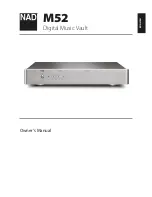
1-4
Revision13 — 02-20-2001
FTB 312 and FTS 316
System Operation
PCB1 Timing and Trigger Board
PCB1 governs all automatic functions. Two differ-
ent PCB1 boards are used in the PC 312-3 Power
Converter. The 24740xx board is used in all
except the “AE” models. The 24747xx board is
used in the “AE” models. The “xx” in the board’s
part number refers to its dash number, which
changes with the board’s internal programming.
The major difference between the two is their
jumpers, internal control and programming. Addi-
tionally, PCB1 for EagleWin “E” systems connects
to a telephone line for remote monitoring by com-
puter. The factory sets the jumpers and programs
PCB1 before it leaves the factory.
Setting Up PCB1
Function Indicators
LED indicators on the PCB1 board signal alarms
and internal functioning. Observe these LEDs to
monitor equipment operations during checkout
and troubleshooting. The essential features on
PCB1 for troubleshooting are shown in Figure 1-2
and Figure 1-3.
PCB1 24740xx
PCB1 (24740xx) has the following features:
•
LED indicators indicating function
•
A neon lamp indicating trigger power
•
Jumpers for external programming
•
An RS-232 socket for internal programming
Refer to Table 1-2 for indicator and lamp func-
tions, and Table 1-3 for jumper settings.
PCB1 24747xx
PCB1 (24747xx) has the following features:
•
Twelve LED indicators indicating function
•
One neon lamp indicating trigger power
•
Two jumpers for external programming
•
One RJ11 telephone line socket for remote
EagleWin monitoring
•
One RS-232 socket for internal programming
Refer to Table 1-4 for indicator and lamp func-
tions, and Table 1-5 for jumper settings.
Table 1-2 PCB1 24740xx Neon or LED Function Indicators
LED or Neon
Lamp
Function
I 1
NITE ERR — On for incorrect intensity for night operation.
I 7
DAY ERR — On for incorrect intensity for day operation.
I 2
PEC ALM — Photocell alarm; photocell failed to switch state within a 19-hour period; factory set.
I 8
WHT ALM — White alarm; on when a white alarm occurs.
I 3
RED ALM — Red alarm; on when a red alarm occurs.
I 9
MKR ALM — Marker alarm; on when marker alarm occurs (a marker or markers are out).
I 4
FAN — Not used.
I 10
SYNC — Flashes when flash control output is on. Flashes regularly during normal flashing opera-
tion of the power converter.
I 5
CONF — Confirm; Flashes after each valid flash.
I 11
DAY — The circuit board is in day mode.
I 6
NITE — The circuit board is in night mode.
I 12
MKRS — PCB1 is commanding markers to be on.
I 13
NEON — Trigger power neon; 120VDC trigger power is being supplied to the circuit board.
Summary of Contents for FTB 312-3
Page 8: ...viii Revision13 02 20 2001 FTB 312 and FTS 316 This page is intentionally blank ...
Page 17: ...FTB 312 and FTS 316 Revision13 02 20 2001 1 9 474031 Figure 1 2 PCB1 Pictorial 24740xx ...
Page 18: ...1 10 Revision13 02 20 2001 FTB 312 and FTS 316 474732 Figure 1 3 PCB1 Pictorial 24747xx ...
Page 25: ...FTB 312 and FTS 316 Revision13 02 20 2001 2 7 FHMO Figure 2 2 Flashhead Mounting and Outline ...
Page 46: ...FTB 312 and FTS 316 Revision13 02 20 2001 2 28 This page is intentionally blank ...
Page 62: ...3 16 Revision13 02 20 2001 FTB 312 and FTS 316 This page is intentionally blank ...
Page 70: ...4 8 Revision13 02 20 2001 FTB 312 and FTS 316 PEC510CL Figure 4 7 PEC 510 Photocell ...
Page 72: ...4 10 Revision13 02 20 2001 FTB 312 and FTS 316 This page is intentionally blank ...













































